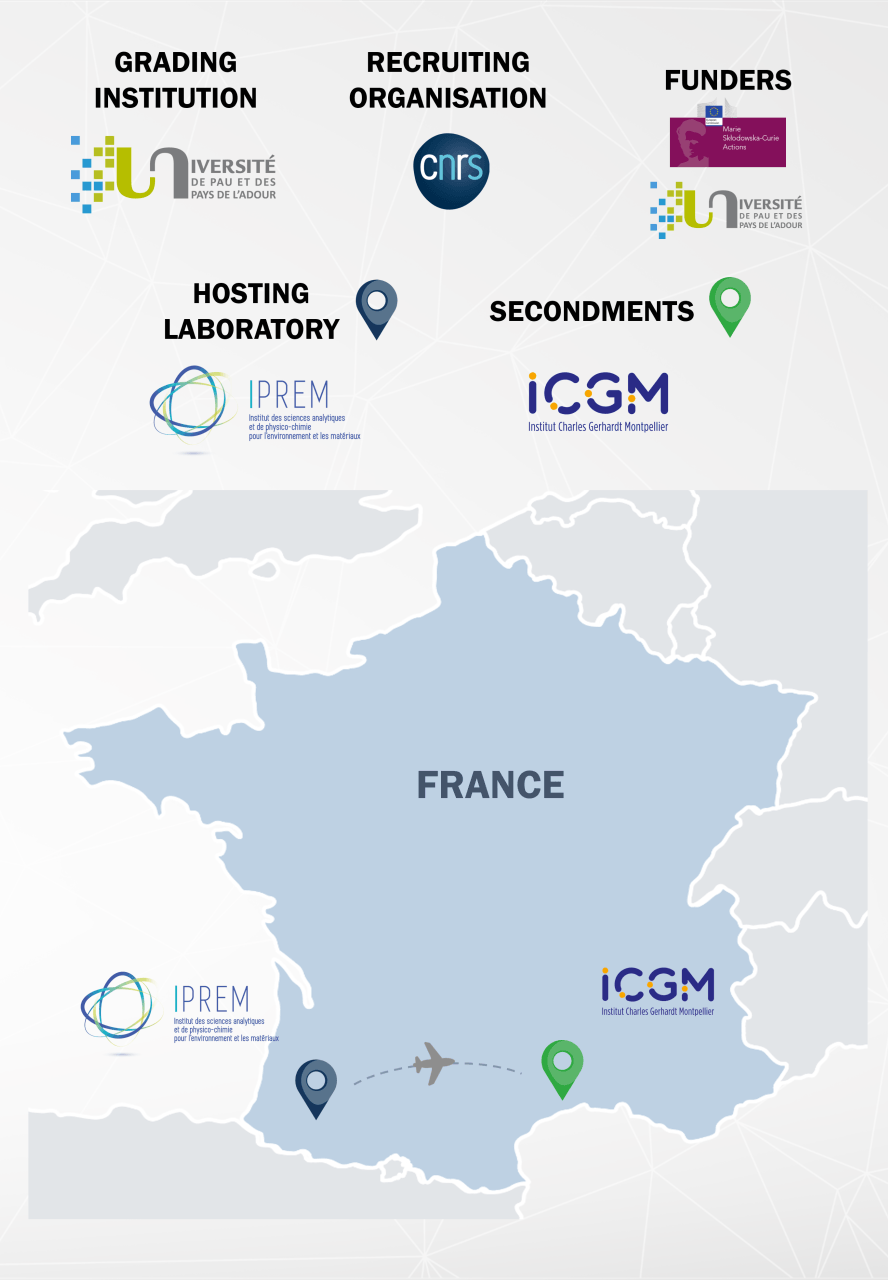TOPIC 20 - Innovative coatings for magnesium and calcium negative electrodes
Magnesium- and Calcium-batteries are a realistic alternative to the lithium-ion technology for the future. Indeed, these metals are highly abundant and safer than lithium, and they also theoretically offer high capacities as negative electrodes. Regarding the positive electrode, sulfur as the electroactive element is a solution to bypass the poor electrochemical insertion of divalent ions (Mg2+ and Ca2+) into classical host electrode materials (layered or polyanionic frameworks). In addition, sulfuris also an abundant element on Earth and theoretically offers very high specific capacities.
However, the passivation of metallic Mg or Ca surfaces in contact with electrolyte solutions prevents practically plating/stripping processes and consequently the overall electrochemical activity. Passivation issues of Mg or Ca surfaces are thus the main scientific bottleneck in this kind of systems. Among the multiple strategies, our proposition in this PhD project is to develop alloy-type surface coatings, and to study their effect on the formation of the Solid Electrolyte Interphase (SEI) at the surface of the coated metallic electrode. Especially, p-bloc elements form alloys with Mg and Ca, which are compatible with standard battery electrolytes.
ICG (Montpellier) started to work on this problematics on Mg electrodes [C. Pechberty, Alloys negative electrode for Mg-ion/S batteries, EUROMAT 2021, Sept. 2021]. For a complete understanding of the coating formation and of its influence on the surface chemistry, a careful characterization of electrodes surface or sub-surface is necessary. IPREM (Pau) possesses the know-how and the analytical tools to characterize both the alloy coatings and the SEI formed at the surface of coated metal anodes in controlled atmosphere conditions. We will use several coating strategies: from the simple metal-to-metal friction method to a more controllable dip-coating technique, or sputtering under vacuum. This project requires an important investigation of the metal electrode surface in order to deeply characterize the pristine protection alloy coatings, and to evaluate its evolution after contact with the electrolyte and after electrochemical cycling.
These advanced surface characterizations will be carried out at IPREM using the dedicated tools available in the lab (XPS, SEM, Auger, ToFSlM-Ei).To reach this goal, the PhD student will be based at Pau (75% time). The coating protocols and electrochemical cycling experiments will perfomed during periodic research campaigns at Montpellier (25% time).
Supervisor(s) contact: Rémi DEDRYVERE, remi.dedryvere@univ-pau.fr

© lauritta - stock.adobe.com / © Visual Generation - stock.adobe.com / © Gstudio - stock.adobe.com / © bsd studio - stock.adobe.com / © alesmunt - stock.adobe.com

